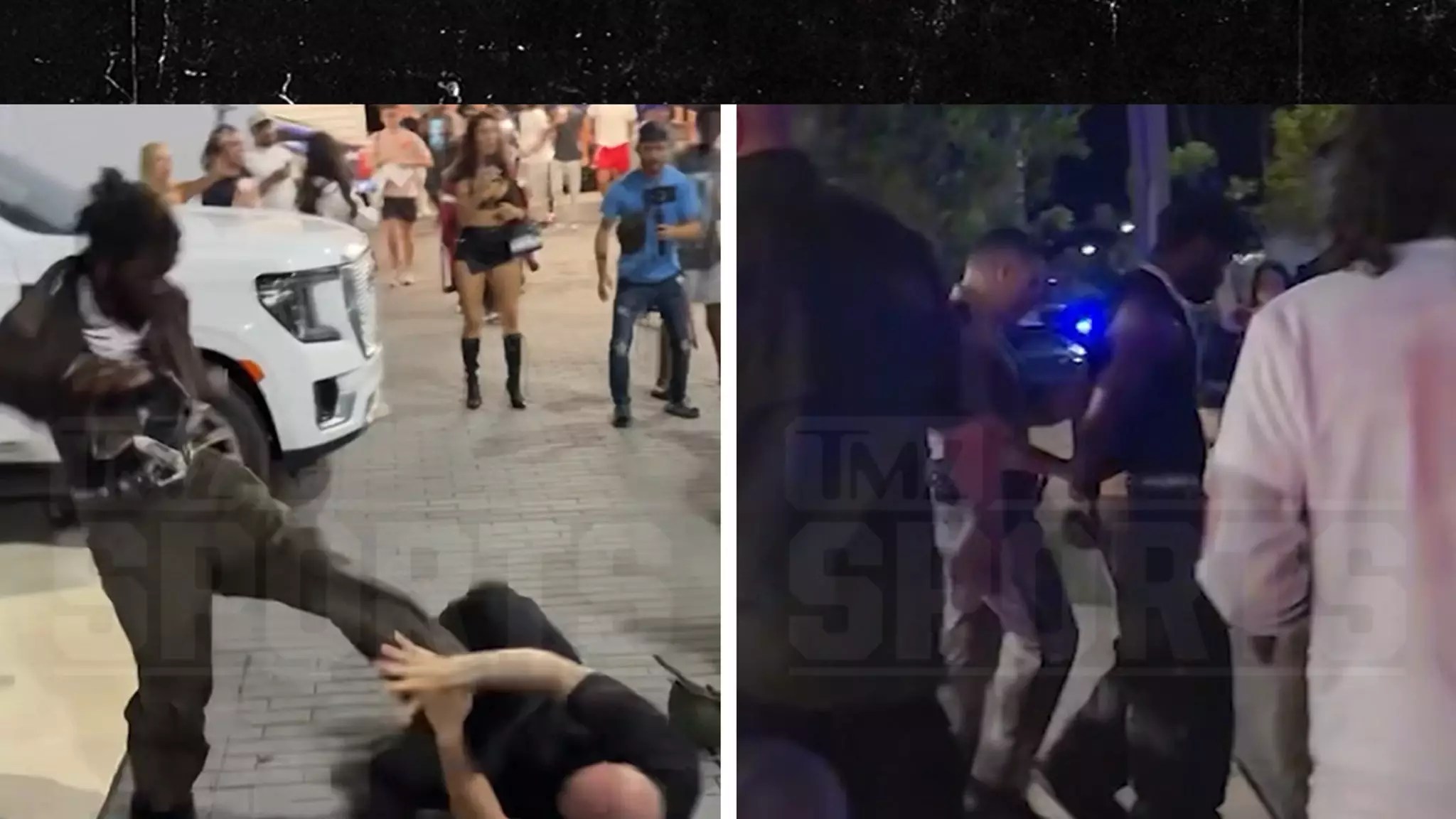In the early hours of a Saturday morning, a seemingly straightforward evening spiraled rapidly into chaos. Antonio Brown, the NFL wildcard often surrounded by controversy, found himself embroiled in a confrontational situation following Adin Ross’ Brand Risk kickboxing event in Miami. At approximately 3 AM, Miami police received a call reporting a disturbance at NE 2nd Avenue and 67th Street, prompting an immediate investigation. Eyewitness accounts compiled during a post-incident inquiry hinted at a brawl characterized by aggression, confusion, and onlookers’ emotional reactions. No arrests were made at the scene, giving rise to numerous questions regarding the nature of that night.
The footage released thereafter presents a chilling depiction of the events: Brown, embroiled in a series of scuffles, is seen navigating physically tumultuous exchanges with multiple individuals. It’s a visual cacophony of punches thrown, tensions rising, and items like his sunglasses and hat literally flying off. Notably, the rapid escalation from a verbal squabble to a full-blown altercation casts a shadow on the atmosphere of celebrity gatherings. Was this a reflection of the pressures celebrities face or a deeper-seated societal issue surrounding violence?
AB’s Side of the Story: Victim or Instigator?
In the snippets from his social media, Brown asserts his stance as a victim, claiming he was assaulted by multiple attackers intent on robbing him. The narrative he presents leans towards self-defense, with his intent to take legal action against those who purportedly attempted to cause him harm. While the spirit of self-defense is universally acknowledged, the accuracy of his recollections remains engulfed in ambiguity, especially given the contrasting reports circulating about his potential involvement with a firearm.
The incident’s mention of gunshots adds another layer of complexity to the situation. A video seemingly depicts Brown as witness to the chaos, as onlookers alert police officers about a gun, while claims arise suggesting that he may have been the one to discharge a weapon. Herein lies a critical contradiction: an individual who portrays himself as the target finds his narrative intertwined fatefully with allegations of gunfire, raising concerns about accountability and the nature of self-defense.
The Aftermath: Not an Unfamiliar Terrain for Brown
The dramatic brawl follows a longtime pattern of erratic behavior associated with Antonio Brown. From high-profile disputes to social media controversies, added to the myriad of legal challenges he has faced, this latest incident poses reflective questions about celebrity culture and the psychological toll it can take. Brown’s apparent ability to quickly return from temporary police custody to join a livestream highlights a complex relationship with accountability. Even after being at the center of a physical altercation, he seamlessly transitioned into an online presence, seemingly unscathed.
The seeming resilience of Brown post-altercation is juxtaposed against the much deeper implications of his behavior. The public’s reaction oscillates between intrigue and concern, but what often gets lost in the noise is the underlying personal struggles that may inform such incidents. Is he merely seeking validation in an increasingly chaotic celebrity landscape, or is it indicative of deeper issues stemming from personal setbacks?
Broader Implications: Celebrity and Violence
Furthermore, Brown’s antics shine a spotlight not only on his personal tribulations but on the broader societal narrative concerning celebrity and violence. How do we as a society contextualize the impulsivity that surrounds those thrust into the limelight? Their experiences, marked by fame and excessive scrutiny, are often microcosmic reflections of societal anxieties about behavior, fame, and accountability.
In the case of Antonio Brown, moments of chaos accentuate the pressing question of how the public perceives acts of violence, especially in contexts tinged with privilege and celebrity status. Are we merely entertained by the spectacle, or do we have a responsibility to inquire deeper? As we disentangle the web of narratives surrounding figures like Brown, we must ask ourselves what these incidents reveal about our culture’s connection to fame, notoriety, and the very human fallout that ensues.
Thus, while Antonio’s portrayal of events unfolds, we are left teetering on the edge of dichotomy: between the desire for entertainment and the unsettling recognition of a troubled individual desperately seeking some semblance of stability amid the storm.







Leave a Reply